HAHN BY SONO (한 바이 소노)
7.0Km 2024-12-20
494 , Juwangsan-ro, Cheongsong-gun, Gyeongsangbuk-do
+82-54-518-5058
Cheongsong Folk Crafts Village has a hanok guest-house compound in the Cheongsong Tourist Area of Gyeongsangbuk-do. Daegam’s house, Yeonggam’s house, and Jeongseung’s house have wide floor areas, big yards many rooms, while Saengwondaek and Chambongdaek are simpler, straight-roofed hanoks. All houses have modern toilets. The barn, warehouse and traditional kitchens are presented as they were in Joseon times. As well as arts and crafts the complex houses a traditional pottery village, a pottery exhibition hall, a folk museum, and the intriguing Flower Stone Museum.
Sono Belle Cheongsong Solsaem Hot Spring (소노벨 청송 솔샘온천)
7.1Km 2024-11-18
494-1 Juwangsan-ro, Juwangsan-myeon, Cheongsong-gun, Gyeongsangbuk-do
Solsaem Hot Spring offers a relaxing escape to visitors with 570 tons of natural spring water daily. Surrounded by the blue forest and clear skies of Cheongsong, the open-air hot spring provides a serene retreat, allowing visitors to unwind and release stress with hinoki bath, neck shower, and underwater massages.
Juwangsan National Park (주왕산국립공원)
7.2Km 2023-03-13
169-7, Gongwon-gil, Cheongsong-gun, Gyeongsangbuk-do
+82-54-870-5300
Juwangsan Mountain (alt. 720.6 m) is located in the Baekdudaegan Mountain Range, the backbone of the Korean peninsula. The mountain features deep valleys and many sheer rock cliffs to make it the third-largest rocky mountain in the country. Juwangsan Mountain was recognized as a tourist attraction on May 30, 1972, and became the 12th national park a few years later on March 30, 1976. The park is relatively small, filling in an area of just 105.582 ㎢ but it is great for a leisure walk with walking trails along the valleys up to waterfalls.
Juwangsan Mountain was called Seokbyeongsan Mountain during the Silla dynasty due to the many stone peaks jutting out but has been called Juwangsan Mountain since the Unified Silla period. In addition to these tall rocky peaks, Juwangsan National Park also includes four waterfalls, caves, Daejeonsa Temple, and other attractions for a comprehensive tourist site.
Daejeonsa Temple (대전사)
7.2Km 2023-04-17
226, Gongwon-gil, Cheongsong-gun, Gyeongsangbuk-do
+82-54-873-2908
Daejeonsa Temple is said to have been built by Great Monk Uisang in the 12th year of King Munmu’s reign (672). It was rebuilt in the 13th year of King Hyeonjong’s reign (1672) after a fire destroyed the original temple complex during the Imjin War (1592-1598). During work to renovate Bogwangjeon Hall in 1976, a text that had been put up with the ridge beams was found. Bogwangjeon Hall is a small building and its ceiling is in the shape of a Chinese character that symbolize with the meaning "well" or "pavilion" that looks similar to the sharp(#) symbol. A Birojanabul Buddhist statue is enshrined in the hall.
Supullim (수풀림)
7.4Km 2024-12-10
This café is located at the entrance of Juwangsan National Park and is also famous for its Juwangsan Mountain view. The view of Juwangsan Mountain is even better from the second floor. The signature menus here are handmade ssanghwacha (medicinal herb tea) and injeolmi patbingsu (shaved Ice with red beans and injeolmi). The café is a great place to stop by to enjoy the scenery of Juwangsan Mountain before or after the hike. This place also operates as a rattan workshop, showcasing and selling handmade rattan items.
Three Falls of Juwangsan Mountain (주왕산 1.2.3 폭포)
7.5Km 2024-02-13
24 Sangui-ri, Juwangsan-myeon, Cheongsong-gun, Gyeongsangbuk-do
Above Haksodae Cliff in Juwangsan Mountain lie three enchanting waterfalls. The first of these falls goes by the name of Yongchupokpo Falls, where water gracefully meanders through a gorge, enveloped by encircling rocks. Roughly one kilometer further upstream, you'll encounter Jeolgupokpo Falls, accompanied by the tranquil Seonnyeotang Pond below. To the left of Jeolgupokpo Falls stands the grandeur of Yongyeonpokpo Falls, the largest and most magnificent among them. Yongyeonpokpo Falls is also famously referred to as Ssangyongchupokpo Falls, denoting its two distinct torrents of water ('ssang' meaning 'two,' and 'yongchu' signifying 'pond' in Korean). A well-maintained trekking path welcomes visitors, allowing them to explore and ascend to witness these three falls, with a gentle incline that is easily traversed by visitors of all ages.
Cheongsong Yasong Art Gallery (군립 청송야송미술관)
8.1Km 2025-01-13
5162, Gyeongdong-ro, Cheongsong-gun, Gyeongsangbuk-do
+82-54-870-6536
The Cheongsong Yasong Art Gallery opened on April 29, 2005. The art gallery exhibits 350 Korean paintings and pottery works of Yasong Lee Won-jwa, who is a traditional Korean painter native to Cheongsong. Also on display are around 50 works of noted painters and sculptors from in and out of Korea, and over 10,000 art books, all of which have been donated to the gallery. The two-story building was formerly Sinchon Primary School, which was remodeled into an art gallery after its closure.
Palpal Sikdang (팔팔식당)
8.2Km 2024-12-10
Palpal Sikdang is a restaurant located north of Juwangsan National Park. The menu is simple with only three items: dak baeksuk (whole chicken soup), chicken wings, and chicken bulgogi. Dak baeksuk is a bowl of chicken porridge served with chicken. The restaurant’s chicken wings are a dish made only with barbequed chicken wings characterized by a crispy texture and rich seasoning. Chicken bulgogi is a dish of chicken mixed with red pepper paste seasoning and grilled on an iron plate. It goes well with vegetable wraps. It has a spicy taste but is not too spicy, so even children can enjoy it. By the restaurant’s entrance is a clean, drinkable mineral spring water that flows down from the mountains.
Marnbauchon Garden (만바우촌가든)
8.2Km 2024-02-13
5173-17 Gyeongdong-ro, Jinbo-myeon, Cheongsong-gun, Gyeongsangbuk-do
054-872-2263, 2264
Marnbauchon Garden, a Korean restaurant nestled near Juwangsan National Park and Dalgipokpo Falls in Cheongsong, offers a delightful culinary experience. The star of their menu is the dak baeksuk, a wholesome whole chicken soup. This delectable dish is crafted by simmering Juwangsan Sinchon mineral water, renowned for its rich mineral content, along with medicinal ingredients like ginseng, jujube, and mung beans. In addition, the restaurant boasts an inviting open-air yard and bungalow facilities, providing a serene setting where patrons can unwind and partake in various activities following their meal.
Jeolgolgyegok Valley [National Geopark] (절골협곡 (청송 국가지질공원))
12.0Km 2025-01-14
San 124, Jusanji-ri, Cheongsong-gun, Gyeongsangbuk-do
+82-54-870-6111
Jeolgolgyegok Valley is located along the mountain ridgeline connecting Gamebong Peak and Wanggeoam Rock in Juwangsan Mountain. It stretches for 5 kilometers from Jeolgol Valley Visitor's Center to Daemun Bridge. The valley is formed of vocanic tuffs that were welded and compacted after cooling down, which resulted in forming vertical cracks, leaving rocks to fall out and create a steep valley cliff.
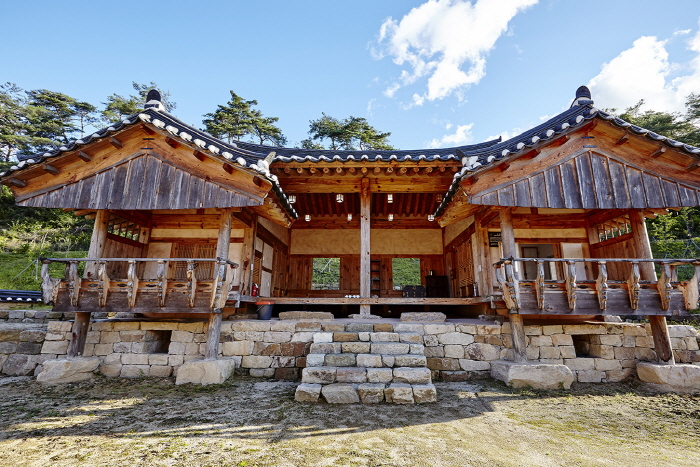
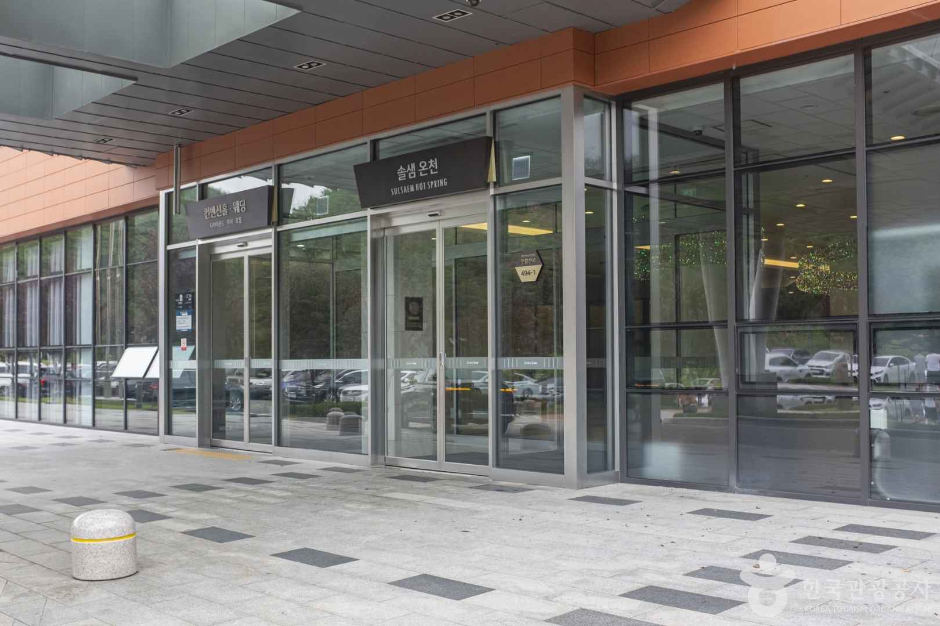

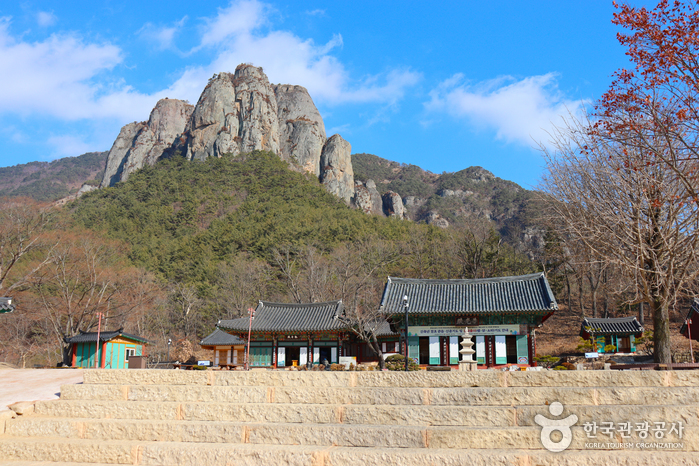
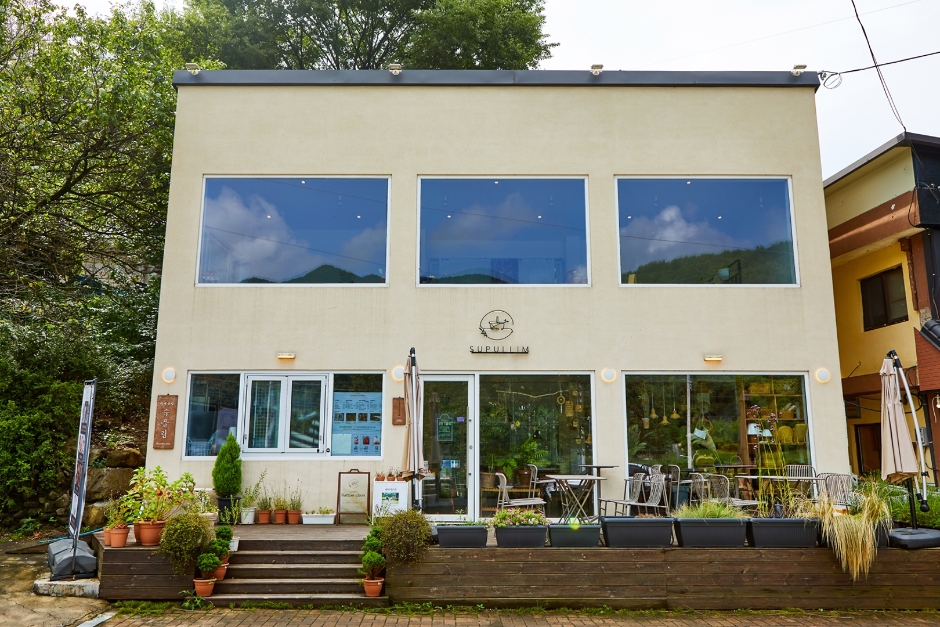
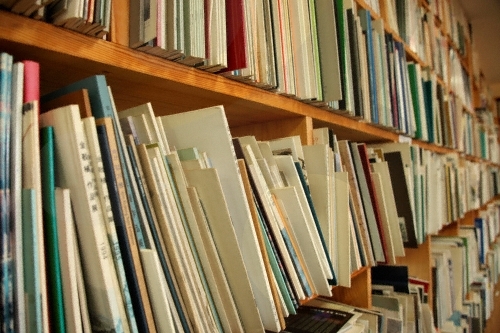
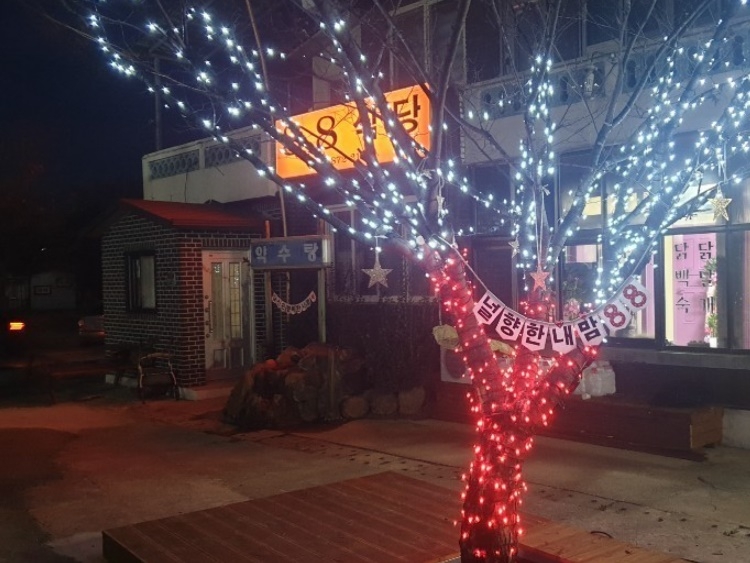
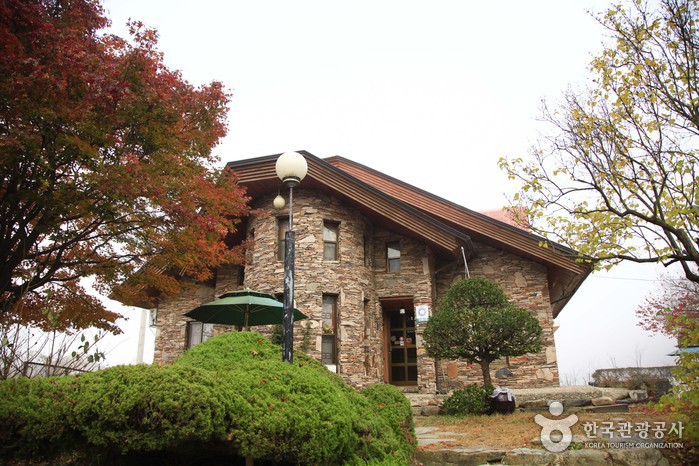
 English
English
 한국어
한국어 日本語
日本語 中文(简体)
中文(简体) Deutsch
Deutsch Français
Français Español
Español Русский
Русский